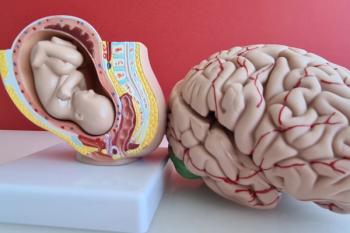
Investigators Hope To Make New Improvements to 100-Year-Old Vaccine
Investigators are looking for a new way to improve upon a 100-year-old vaccine.
Jim Kublin, MD, MPH, an investigator at Fred Hutchinson Cancer Research Center, is part of an international collaboration taking a new look at improving the bacille Calmette-Gurérin (BCG) vaccine, a pediatric vaccine used in many other parts of the world to combat tuberculosis (TB), according to
The group is hoping to apply strategies and findings from the development of potential HIV vaccines to now learn more about how the immune system responds to BCG and other TB vaccines in an effort to curb one of the most deadly infectious diseases in the world.
The BCG vaccine-which isn’t used in the United States but is regularly used in India and Africa to combat TB-has not undergone any significant changes in 100 years.
However, now investigators believe they have “an opportunity to improve on that,” Kublin told the Fred Hutch News Service.1
Kublin is the senior author of a new study published last month in
The study focused on children who were re-vaccinated 12 to 17 years after they were first immunized as babies and served as a companion study to larger scale study that looked at revaccinating with BCG and an experimental TB vaccine known as H4:IC31.2 The results of the larger study were published in 2018 in the
In this latest study, however, Kublin and his team took a deeper look at how participant’s immune systems responded to the vaccine. Investigators discovered several significant findings in the HVTN 602 study including that those participants who had been vaccinated as children had a previous “memory” of Mycobacterium bovis that kickstarted again when the vaccine was introduced a second time. The result was a protective effect linked an increase in T cells.2
Investigators can learn more about the “correlates of protection” against TB by studying the biomarkers that appear in those who are vaccinated with BCG and have lower rates of TB.
This latest study by Kublin and colleagues is just 1 example of those possible correlates of protection and how this type of research can help shape future TB vaccine efficacy trials.2
“From this, we can learn why it worked in some people, but not in others,” Andrew Fiore-Gartland, PhD, a Fred Hutch investigator, said of the study’s findings in the release.1 “Once you identify that correlate of protection, you can try to make the vaccine better. If you don’t have those correlates, you are just throwing darts. This is rational vaccine development.”
In 2018, it’s estimated that 10 million people were infected with TB leading to 1.5 million deaths that year, according to the
References:
1. Study points toward progress on TB vaccines. News Release. Fred Hutchinson Cancer Research Center; March 16, 2020. Accessed May 14, 2020.
2. Bekker LG, Dintwe O, Fiore-Gartland A, et al. A phase 1b randomized study of the safety and immunological responses to vaccination with H4:IC31, H56:IC31, and BCG revaccination in Mycobacterium tuberculosis-uninfected adolescents in Cape Town, South Africa. EClinicalMedicine. March 18, 2020. doi:
3. Nemes E, Geldenhuys H, Rozot V, et al. Prevention of M. tuberculosis Infection with H4:IC31 Vaccine or BCG Revaccination. N Engl J Med. 2018. doi: 10.1056/NEJMoa1714021
4. Tuberculosis. World Health Organization. March 24, 2020. Accessed May 14, 2020.
Newsletter
Pharmacy practice is always changing. Stay ahead of the curve with the Drug Topics newsletter and get the latest drug information, industry trends, and patient care tips.





















































































































































